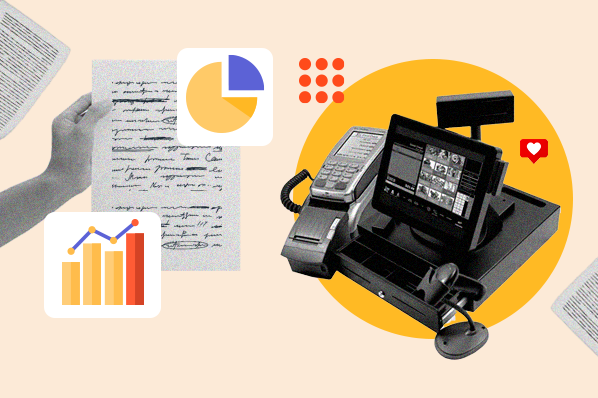The first time I discovered the true power of a solid customer acquisition strategy, my freelance business was struggling to attract the right leads. I knew something had to change.
After countless hours of research and trying different approaches, I found a way to bring in new customers and keep them coming back. The solution? Investing in the right customer acquisition strategy.
→ Download Now: Customer Service Metrics Calculator [Free Tool]
In this guide, I‘ll show you how to build a flexible and effective acquisition strategy. You’ll learn the basics of customer acquisition, how to reduce the cost of gaining new customers, and how to make the most of your loyal ones.
Keep reading or use the chapter links below to jump ahead.
Chapters
What Is Customer Acquisition?
Customer acquisition is the process of getting potential customers to buy your products. A strong customer acquisition strategy: 1) attracts leads, 2) nurtures them until they become sales-ready, and 3) converts them into customers. The overall cost of these steps is referred to as your customer acquisition cost (CAC).
Why is customer acquisition important?
Customer acquisition is important for businesses of any age and size. It allows your business to:
- Make money to meet costs, pay employees, and reinvest in growth.
- Show evidence of traction for outside parties such as investors, partners, and influencers.
Being able to systematically attract and convert new customers keeps companies healthy and growing — and investors happy.
What is the purpose of customer acquisition?
The purpose of customer acquisition is to find a repeatable, methodical way of attracting customers to your business. Sure, you can wait for customers to naturally come to you, but that won’t guarantee you can increase — or even maintain — profits over time.
Instead, I use specific techniques to get potential customers to take action. My goal is to create a systematic, sustainable strategy to acquire new customers and grow revenue for my business.
In many respects, this process sounds like marketing: you’re looking for ways to showcase your brand and connect with customers. But there’s a difference between the two.
.png)
Free Customer Service Metrics Calculator
Calculate your business's key metrics and KPIs for customer support, service, and success with this free template.
- Customer Acquisition Cost
- Customer Lifetime Value
- Customer Satisfaction Score
- And More!
Download Free
All fields are required.
.png)
What is customer acquisition vs. marketing?
Marketing aims to build awareness, while customer acquisition looks to drive action. For example, let’s say you run a Facebook ad aimed at your target market. Metrics will help determine if your effort is working — you can track how many people have shared your ad, commented on it, etc. That’s marketing.
Meanwhile, acquisition speaks to what happens after potential customers click through to your page or receive your emails. If they’re willing to take action by purchasing your products or services, that’s acquisition. Put simply?
Marketing drives recognition. Acquisition drives revenue.
Now, you might be wondering, “What’s the difference between lead generation and customer acquisition?”
Let’s break it down.
The Customer Acquisition Funnel
In the business world, we typically visualize the customer journey with a funnel or a similar graphic that highlights the stages in the buying process and the prospect's mindset.
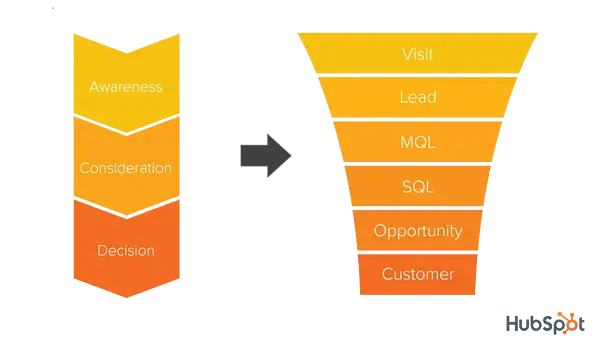
As consumers move through the funnel to become buyers, they:
- Gain awareness about your brand.
- Add your product or service to their consideration pool.
- Decide to become a paying customer of your business.
To simplify the process, lead generation typically happens at the top of the funnel, lead acquisition happens in the middle, and lead conversion happens at the bottom.
And customer acquisition typically refers to the funnel as a whole.
Here’s another way to visualize it, in a less funnel-like fashion:

Picture this process as moving through phases like “attract,” “convert,” and “close.” Here, strangers become visitors, morph into leads, and finally, transform into customers.
Take it further: For a more in-depth dive, I recommend checking out this free course from HubSpot Academy to better understand conversion strategies.
In some organizations, when we talk about customer acquisition, we‘re really focusing on the top and middle of the funnel, blending lead generation and acquisition. The reason? The bottom of the funnel — where conversion happens — often demands more tailored strategies like lead scoring and closing techniques. That’s why I recommend tracking everything with a robust marketing analytics tool.
Pro tip: By monitoring marketing efforts across all channels, I can pinpoint my top revenue sources and identify the strategies for drawing the most qualified leads. This enables me to fine-tune my approach, optimizing the cost of acquiring customers.
For the sake of this post, let's assume customer acquisition encompasses the whole funnel.
Acquisition Marketing
Acquisition marketing is the process of creating an advertising and promotion strategy that specifically targets consumers who are already considering your products and services. These consumers are aware of your brand, making them prime candidates for conversion.
Acquisition marketing is different from other marketing because it specifically targets those consumers who have become aware of your brand and are considering making a purchase.
Digital Acquisition Marketing
Digital acquisition marketing uses online channels — like organic search, social media, and display ads — to reel in new customers. A killer digital acquisition strategy needs your marketing and customer service teams to be on the same wavelength.
Your marketing team is responsible for developing and releasing new promotional materials that may spark interest in new customers. But it's your customer service team that has a direct line to your current customers—and your current customers can be some of your best marketers.
When visitors land on your website, they‘ll passively browse the content your marketing team crafted and might decide to buy. But if they hop onto your live chat, they’ll chat directly with your service team. The same goes for social media inquiries, where your customer support reps take the reins.
In short, your customer service team can attract and retain customers just as well as your marketing team. That’s why acquisition marketing isn’t just about the marketing team.
Before we discuss retention through your customer service team, however, let's talk about some customer acquisition channels that your marketing team can use to capture potential customers’ interest and convert them.
Acquisition Channels
Customer acquisition channels are the platforms companies use to promote their products and services to new audiences — including organic search, organic social media, and email. The best acquisition channels for your business will depend on your audience, resources, and overall strategy.
Customer acquisition methods can be broken up into a variety of different types: paid and free, inbound and outbound, etc.
Below, I'll review some common methods of acquiring new customers. You can employ all of them — some at smaller scales, some at larger scales.
1. Organic Search
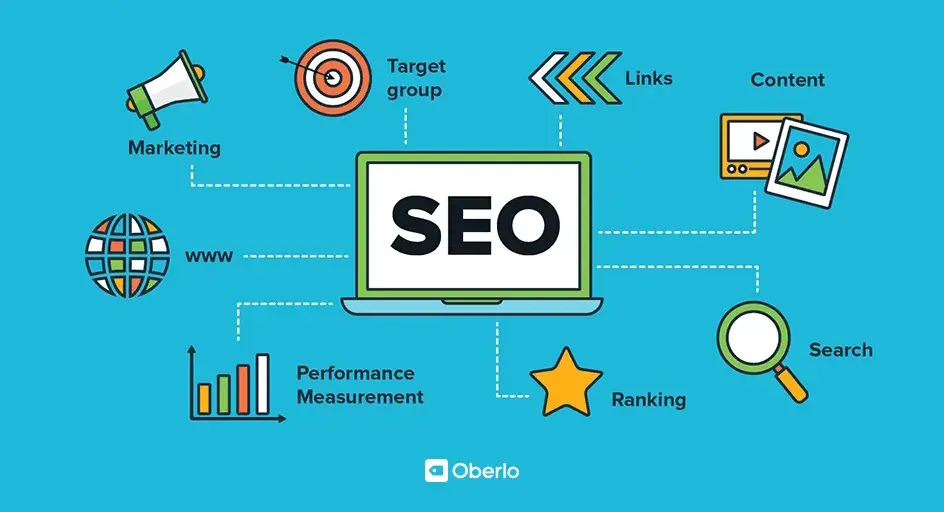
Organic search is all about showing up on search engine results pages (SERPs) like Google or Bing. Organic search marketing aims to get you high up on these lists.
To leverage organic search as a customer acquisition channel, you must invest in search engine optimization (SEO). SEO, like social media, complements content marketing efforts by optimizing your content so it’s more easily found by your target audience.
Here's how I think about it:
When I Google something, I usually click on one of the first results. That's the power of SEO — creating content that lands high on the SERPs and draws clicks.
What's more, I don’t have to guess how to use organic search for my customer acquisition plans. I can use tools like Semrush, Moz, and Ahrefs to find the best keywords for my business and create content that attracts potential new customers.
2. Paid Search
Paid search marketing, pay-per-click, or PPC, is advertising on search engines themselves. Plus, with platforms like Google Ads, I can place ads directly in search results and even on partner websites.
Instead of waiting for my content to climb the organic ranks, I can pay for it to appear alongside the top search results, increasing my chances of being seen. To make sure my content and ads perform their best, I rely on tools like Google Keyword Planner and Microsoft Advertising.
3. Organic Social Media
When it comes to social media marketing, I have two paths: organic and paid.
Organic social media is my go-to for boosting brand awareness, shaping my company’s personality, and sharing content I've published elsewhere, like blog posts or videos. It also lets me capitalize on the “virality” factor, encouraging my customers and followers to help spread the word about my business.
4. Paid Social Media
If I have the budget and know where my audience hangs out, paid social media can be a great option. It's a surefire way to get my content in front of the right people without waiting to build a huge following. (But don’t get me wrong — that’s important, too!
For example, sponsored posts on Facebook, X, or Instagram get my content seen by more people. Like this one:
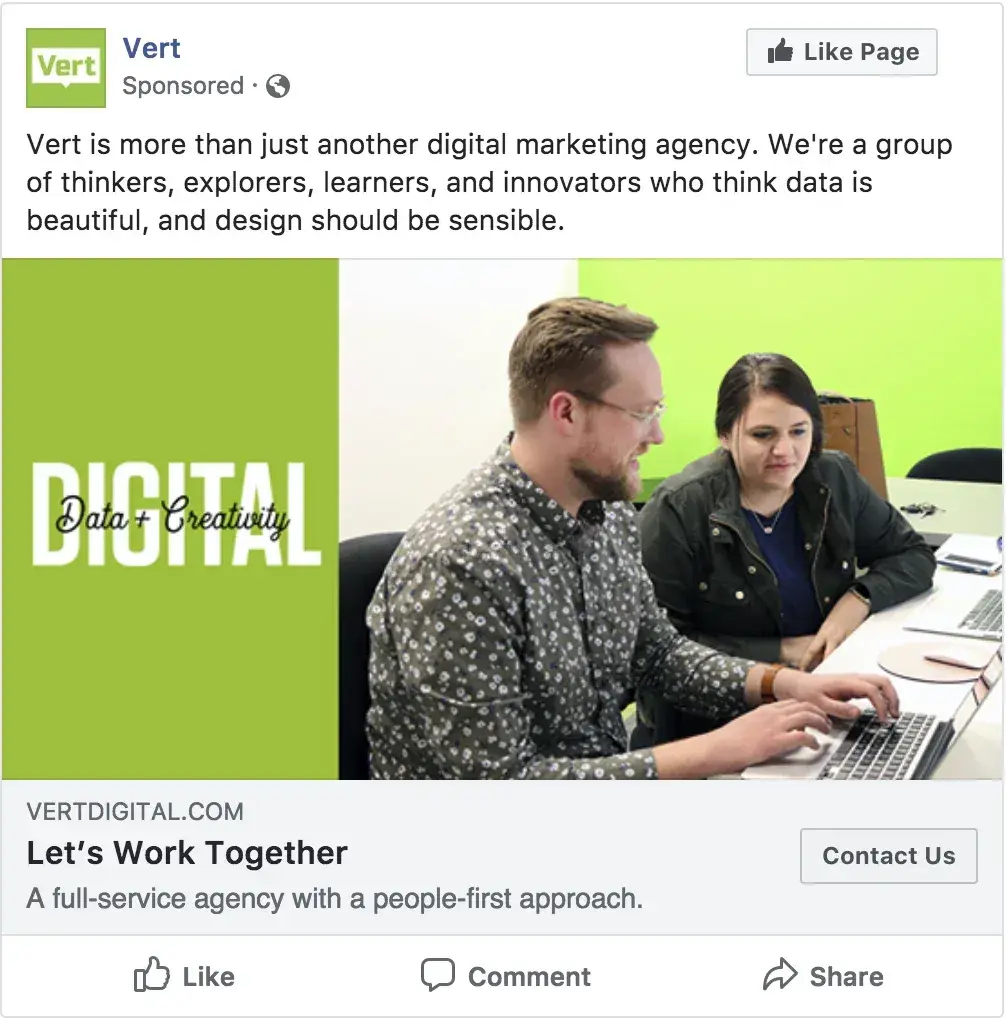
Plus, Facebook Lead Ads allow me to gather valuable customer information like email addresses and names. This can make the difference between a casual follower and a lead. So, if building my list is a priority, this method might be perfect for me.
Pro tip: To keep everything organized, I use a social media content calendar. Download a free guide and template from HubSpot to get started with yours!
5. Email
I love how email turns all that customer info we gather into a powerful tool. Building an email list lets us connect with our customers directly, making it easier to convert them.
Email marketing might seem old-fashioned, but it’s still a highly effective way to stay in front of your customers and promote quality content, product information, and discounts and events.
Whether it’s a birthday wish or a valuable promo, email is a great way to connect with our audience. It’s a direct line to their inbox, bypassing the noise of social media and search engines. Outside of direct sales, I believe nothing beats email marketing for getting personal with our customers.
Pro tip: Download our free beginner's guide to email marketing to learn how to execute and measure successful email marketing campaigns.
6. Referrals
I've found that tapping into an existing customer base is a goldmine for new leads. Customer referrals are incredibly powerful for acquiring new clients. And while I can’t force referrals, I can certainly encourage them.
Creating a referral program is a surefire way to bring in new business through your customers. Offering incentives — whether credit, physical gifts, or monetary rewards — is usually the best way to motivate a customer to share about your company (and compensate them in return). If a referral is valuable to me, offering something valuable in return makes sense.
For B2C companies, I’ve seen that a structured, incentive-based program works wonders. B2B businesses might find more success asking for direct referrals. Whatever referral strategy you choose, I always make sure to provide value first. When customers are delighted with our service, they can’t help but share it.
7. Events
I love using events like conferences, webinars, and trade shows to connect with potential customers.
Most events these days are virtual, making customer acquisition a breeze since attendees register with their email addresses. Plus, virtual events are fun and convenient — I can connect with prospects and sponsors from my couch. If you’re new to this channel, I recommend starting with a small webinar or virtual summit or renting a booth at a larger event.
8. Traditional Advertising
I've also learned not to underestimate traditional advertising channels like TV, radio, and print media. They’re particularly great if you're a local business or a large company with the budget for multi-city campaigns.
.png)
Free Customer Service Metrics Calculator
Calculate your business's key metrics and KPIs for customer support, service, and success with this free template.
- Customer Acquisition Cost
- Customer Lifetime Value
- Customer Satisfaction Score
- And More!
Download Free
All fields are required.
.png)
I always make sure to target ads carefully and understand the audience of each publisher. You can usually get this info from the publisher’s media buying guide, which will also outline the ad dimensions and other requirements.
Now that I've covered the various channels you can use for your customer acquisition plan, let’s discuss specific strategies for each one.
Customer Acquisition Strategies
- SEO
- Content Marketing
- Blogging
- Social Media Marketing
- Video Marketing
- Email Retargeting
- Sponsored Content
- Customer Spotlights
- Gated Content
- Product Pricing
When creating a customer acquisition plan, I mix various strategies to get my desired result.
1. SEO
Customer acquisition channel: Organic Search
SEO isn’t an exact science, but there are some tried-and-true methods to help your content rank better. The goal is to make your content indexable — easily readable and understandable by search engines.
Here’s how you can boost your content’s “indexability”:
- Use your main keyword in the post title.
- Add alt text to your images.
- Upload transcripts for video and audio content.
- Link internally within your site.
Of course, there's much more to SEO, but these basics will get you started.
According to HubSpot's The State of Marketing Report, having direct experience is extremely valuable for SEO. This knowledge allows you to offer practical tools and gather useful data. Such tools and firsthand data are effective for generating leads — you can easily use and adjust them to fit your own needs.
2. Content Marketing
Customer acquisition channel: Organic search
Content marketing is an effective customer acquisition method for all types of businesses. Creating new, exciting, and relevant content is a highly effective way to snag your audience’s attention and send them to your website.
In a world of false advertising and diminishing trust, content marketing offers a genuine approach: “I love what I do and want to share my expertise with you — for free.”
And who doesn't like that?
The beauty of content marketing is that there's no wrong type of content. The core is to connect with and convert your audience. Each piece should be relevant and include a clear call to action. Remember, content marketing is as much about content promotion as it is about content creation.
3. Blogging
Customer acquisition channel: Organic search
Blogging is a highly recommended acquisition method for businesses of all sizes, industries, and audience types.
It lets you explore different topics, showcase your industry knowledge, and build authority with your readers. Blogging also provides ongoing opportunities to engage your audience — whether through a bookmarkable graphic, a question in the comments, or a compelling call-to-action.
Pro tip: Make sure you have the resources to sustain your blog. Writers can be employees, freelancers, or guest contributors. A graphic designer and editor can help optimize your content for both search engines and readers. Adding a blog to your website is usually straightforward, depending on your hosting platform.
Free resource: Save time creating blog posts with six free templates.
4. Social Media Marketing
Customer acquisition channel: Organic social media, Paid social media
Social media can be a powerful tool, but it requires a solid strategy.
Here are some key questions to consider:
- Which networks will you use, and which will you avoid?
- What will your social brand voice be?
- Who will manage your social content?
- Do you have a crisis plan?
If these questions seem intimidating, don’t fret. Posting organically on social media may seem like shouting into a void. The key is accessing the right networks — and this all comes back to a well-defined audience.
For example, Pinterest isn’t useful if your target is mainly men, as only 22% of men use it. But if you’re targeting millennials, Facebook, Instagram, and Snapchat should be part of your strategy.
Pro tip: Consider using HubSpot's social media management tools to curate and post content on your networks.
5. Video Marketing
Customer acquisition channel: Paid search, Organic social media, Paid social media
Video content is complex to produce, but with affordable high-quality cameras and plenty of freelancers, it’s easier than ever.
Video marketing, when done right, focuses on quality content. The production process involves script writing, editing, production, and sometimes animation. You can outsource these tasks to freelancers or agencies. While video tends to be more expensive, it’s worth it for your best content ideas.
Video content is highly versatile. Promote it through search display ads, organic social posts, and paid social ads. Embed videos in blog posts and web pages to engage readers and increase conversion chances.
If you don’t have a video budget, consider creating a Slideshare as a visual alternative.
Free resource: Download this ultimate video starter pack to get resources and tips to kickstart your video marketing strategy.
6. Email Retargeting
Customer acquisition channel: Email
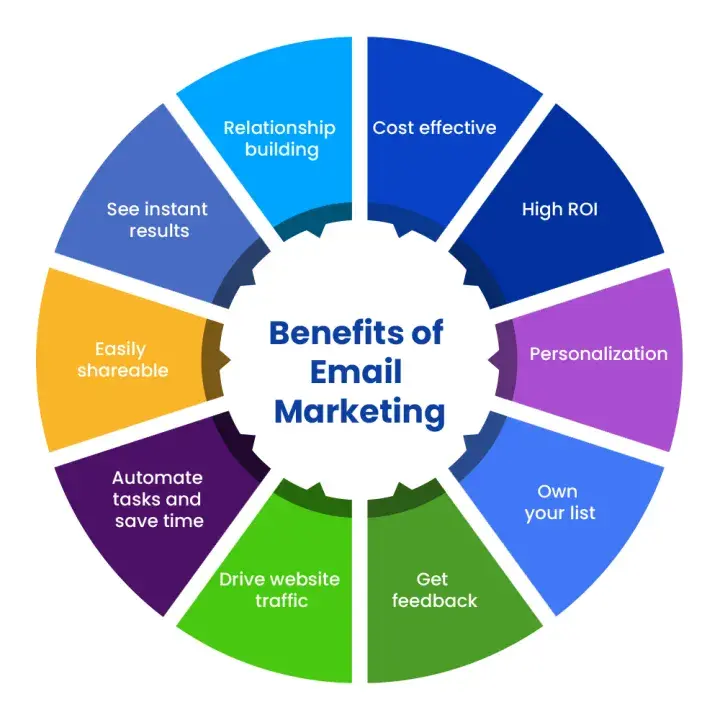
What you send isn’t the only important part of email marketing. It’s also helpful to keep an eye on list behavior and retarget your emails accordingly.
For example, when you get a new subscriber, it’s safe to assume that the consumer is interested in your company and wants to learn more. If they don’t respond to the first few emails you send, however, you’ll want to adjust your strategy and A/B test different calls-to-action.
Notice which links get the most clicks to understand what grabs your subscribers‘ attention. And if someone unsubscribes, that’s valuable feedback on your email content.
7. Sponsored Content
Customer acquisition channel: Paid search, Paid social media, Traditional advertising
Sponsored advertising can run the gamut from paid ads on the SERPs to influencer posts on social media.
No matter the channel you choose, these ads help you generate awareness about your products and services and attract new audiences to your brand. You can play with different types of sponsored content, such as sponsored search results, sponsored product mentions, and paid blog posts on related publications.
8. Customer Spotlights
Customer acquisition channel: Customer referrals
One powerful customer acquisition tactic? Turning your satisfied customers into promoters.
Here’s how you can empower your customers to promote your business and help you save time and money on other acquisition methods.
- Ask for customer stories. Turn your happy customers into brand promoters. Invite them to share their stories through case studies, interviews, reviews, or user-generated content. Let your customers' voices sing your praises instead of doing it yourself.
- Make content easily shareable. While a happy sentiment can get the message across, wouldn’t it be even better if your customers were equipped to directly share content you’ve created, like social posts, blog posts, or graphics?
I call this the viral loop — it’s when your customers share content that leads their followers back to your business. Create Click to Tweet links so your customers can easily share social posts, and ensure each piece of published content has options to share via email or social media.
Pro tip: The more convenient promotion is for your customers, the more likely they’ll engage.
9. Gated Content
Customer acquisition channel: All
Gated content, like ebooks, guides, templates, and white papers, is a clever way to gather leads. By offering valuable resources, you ask readers to exchange their emails and names to access the content. This tactic fits seamlessly with any customer acquisition channel. You can optimize the content's landing page for search engines or promote it on social media ads.
This strategy walks the line between SEO, content marketing, and conversion rate optimization, helping you turn your blog into a lead-generation machine. Just remember, the content must stay gated — don’t let it be indexed and found online for free. Otherwise, potential leads might just search for it without giving you their email.
10. Product Pricing
Customer acquisition channel: All
Your product's pricing strategy is another powerhouse for customer acquisition. Whether you push it through TV ads, customer referrals, or let it shine on its own, pricing can be a magnet for new customers. If your competitors‘ prices are sky-high or they don’t match your model, you're in a sweet spot.
Freemium software, for example, draws in budget-conscious users who might later upgrade to a paid plan. Free tools attract anyone looking to try before they buy. If you sell consumer products, “Buy One, Get One Free” will have a horde of customers clicking “Add to cart,” expanding your customer base without much work.
Consider the following specific pricing strategies:
I've found that these customer acquisition methods work best when combined. For example, I can use social media to promote SEO-optimized content that includes a call-to-action for joining an email list. That might sound a bit long-winded, but you get the idea.
By mixing and experimenting with various customer acquisition strategies, I can learn more about my audience and introduce new tactics to my current strategy. No matter which strategies I choose, I always leave room for analysis, improvement, and change — because I never know when customers might stop responding to my methods or leave altogether.
.png)
Free Customer Service Metrics Calculator
Calculate your business's key metrics and KPIs for customer support, service, and success with this free template.
- Customer Acquisition Cost
- Customer Lifetime Value
- Customer Satisfaction Score
- And More!
Download Free
All fields are required.
.png)
How to Measure Customer Acquisition
You’ve heard the buzzword: customer acquisition cost.
Customer acquisition cost (CAC) is the cost associated with bringing a new customer or client to your business, such as marketing costs, events, and advertising. It’s typically calculated for a specific campaign or window of time.
CAC is important because it assigns real value to your marketing efforts and allows you to measure your ROI — a metric inquired about by CEOs, managers, and investors alike.
How to Calculate Customer Acquisition Cost
High-level customer acquisition cost is calculated by dividing marketing costs associated with a specific campaign or effort by the number of customers acquired from that campaign.
Featured Resource: Free Customer Acquisition Cost Calculator

CAC Formula
CAC = MC / CA
Here:
- CAC is customer acquisition cost
- MC is marketing costs
- CA is customers acquired
To get a precise look at CAC, include all marketing-related costs. Think beyond just campaign spend — add marketing salaries, software, and even the cost of the office supplies used to create those lengthy contracts.
CAC Formula Example
This CAC formula looks like this: CAC = (MC + W + S + OS + OH) / CA.
Here:
- CAC is customer acquisition cost
- MC is marketing costs
- W is wages for marketing and sales
- S is marketing and sales software
- OS is outsourced services
- OH is overhead for marketing and sales
- CA is customers acquired
A simple CAC metric might apply to a single campaign, but for a deeper analysis, use this formula over a specific time frame, like a month or a fiscal year. For example, if Company A spent $10,000 on customer acquisition in Q4 2021 and gained 100 customers, the CAC would be $100.
I’ve found that CAC can be a fickle metric and shouldn’t be the only number I use to evaluate my marketing efforts. Why? Well, here are a few things that could throw off the value and application of my CAC:
- On average, how often do your customers make purchases? There’s a major difference between the CAC of an Audi dealership and a Starbucks.
- Does/did your company spend money on marketing efforts slated to pay off in the far future? Say you invest in a Q3 campaign but pay for it in Q1. You aren’t necessarily going to see new customers right away from that investment, and that might skew your Q1 CAC.
Regardless, I also know that CAC is a critical number to calculate—and recalculate—when acquiring new customers and employing new acquisition methods.
How to Minimize Customer Acquisition Cost
Here’s the simple truth I know about marketing: You can always do better. You can always reach new audiences, market with better messages, and reduce associated costs.
Now, depending on your outlook, this could be good or bad news.
There’s always something to learn and always something to improve upon. Better yet, you aren’t stuck with a subpar metric that your executives or investors aren’t quite happy about.
If you’re looking to improve your CAC, here are a few ways to minimize the cost of acquiring new customers:
- Improve your website conversion efforts. Enhance your calls-to-action, ensure your site is mobile and tablet responsive, optimize your landing pages, and clean up your copywriting. Consider A/B testing a landing page or shopping cart to see if a certain design or copywriting angle works best. These will make sure any customer acquisition methods you’re already employing are working as perfectly as possible.
- Boost the value of your current customers. This may involve releasing a new product or upgrade in which your customers can also invest in. User value can also skyrocket when they refer other customers or simply act as promoters for your business.
- Adjust and optimize your customer acquisition strategy. Take a good look at your acquisition blueprint and break down what each method is costing you. Are there areas where you can cut back on marketing spend or manpower? Marketing costs for specific channels can creep up over time. Exploring newer, cheaper channels could help keep your CAC down. This step ensures your strategy stays fresh and flexible, adapting to the latest marketing trends.
How to Improve Your Customer Acquisition Strategy
Every business needs new customers to grow and succeed. Whether you’re a company of five or 5,000, having a roadmap for customer acquisition is a smart move.
Here are a few steps I take to build a strong customer acquisition roadmap:
1. Make your strategy sustainable.
I always think long-term. A sustainable customer acquisition strategy is one that works in the long run. This means the investments I make — whether money, time, or human resources — can be maintained for the foreseeable future.
For example, if I plan to acquire new customers through a blog, I ensure I have the tools and resources to keep producing content beyond just a few posts. This continuous effort brings in organic traffic for months or even years.
Inbound marketing excels here because it creates sustainable traffic, offering a steady source of new customers. Compare this to ads, which are effective only as long as they’re live.
2. Build in flexibility.
I‘m also adaptable. Marketing and sales are constantly evolving, as are customer behaviors. Salespeople were once the gatekeepers of product information, but that’s changed.
Today, consumers trust advice from family and friends over businesses. If my acquisition strategy relies solely on salespeople, I could be in trouble. Keeping my strategy flexible ensures I'm ready to pivot with market trends.
3. Find your target market.
I‘ve realized not all consumers are my best consumers, and targeting the wrong people will only waste precious resources. That’s why, before investing in any acquisition methods, I define my target audience.
This helps me eliminate unnecessary or wasted efforts and highlights specific needs or desires that certain channels can meet. For example, if I’m targeting Gen Z, creating videos might be key, given that 1 in 6 teens use YouTube and TikTok almost every day.
For a targeted strategy, I take a step back and figure out what’s best for my business, resources, and audience. This approach leads to real responses to my customer acquisition efforts.
4. Diversify your approach.
I’ve found that diversifying my customer acquisition strategy is crucial.
When I mix things up and use different acquisition methods, I reach new audiences and generate fresh leads more effectively. Plus, having multiple channels balances the risk. If one starts to flop (for instance, the salespeople example from before), I can reallocate my funds to what’s working better.
5. Track your customer lifetime value.
While acquiring new customers is great, keeping them around is even better.
Knowing which types of customers stick with me the longest helps refine my strategy. Customer lifetime value (LTV) gives me the net profit I can expect from a customer over their lifetime. This metric is gold for understanding my customers and how they interact with my business. It also helps gauge the effectiveness of my marketing and support efforts, influencing decisions across the board.
Sure, customers with high LTV might cost more to acquire, but they bring in more revenue, give valuable feedback, and are likely to refer others. The good news is that calculating customer LTV isn’t that difficult. I start by defining metrics like average purchase value and frequency. Even rough estimates can help predict the revenue a customer will bring over time.
Pairing LTV with CAC tells me how long it takes to recover my investment in new customers and how to allocate my budget more effectively.
6. Prioritize decreasing customer churn, not making up for it.
No matter how hard I try, sometimes customers leave. It‘s just part of the business. But let’s dive into something crucial: Churn.
Customer churn represents the percentage of customers that peel away from your business and opt-out of your products or services. It’s also referred to as customer attrition or turnover.
When I lose customers, my instinct before was to go out and find new ones. This has led me to spend more on acquiring customers as churn rates rise, which is when I thought of flipping the script?
Instead of using new customer acquisition to patch up the churn problem, I started focusing on reducing churn itself. By addressing the root cause — unsatisfied customers — I can now avoid the “band-aid” solution of constantly seeking new ones.
Think about it: happy, retained customers can actually help attract new ones. Instead of always looking outward for replacements, I can look inward, improving customer service and retention.
7. Switch from an acquisition funnel to an acquisition flywheel.
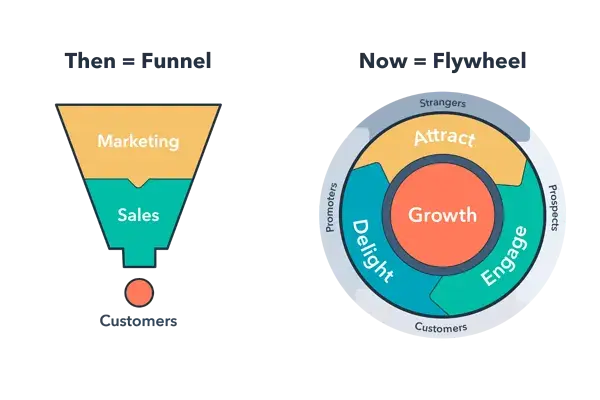
Remember how I discussed the marketing funnel in the first section?
While it's great for visualizing how customers come to know and buy from us, it misses one key element: the role of my current (and past) customers in driving future business.
Enter the “flywheel,” a concept popularized by HubSpot.
It illustrates how a business gains momentum when everyone is focused on delivering a remarkable customer experience. Happy customers bring in referrals and repeat sales, creating a self-sustaining cycle.
This is customer retention in action. Instead of spending big bucks to replace lost customers, I invest in keeping them happy. It's a cost-effective strategy.
Note that customer retention strategies will vary depending on your business model, audience, and resources. But the goal remains the same: to keep your customers delighted so they keep coming back — and bring others with them.
Now that you know what makes an amazing customer acquisition strategy, let's talk about some companies that are doing it well.
Customer Acquisition Strategy Examples
1. Product Pricing Acquisition: Otter.ai
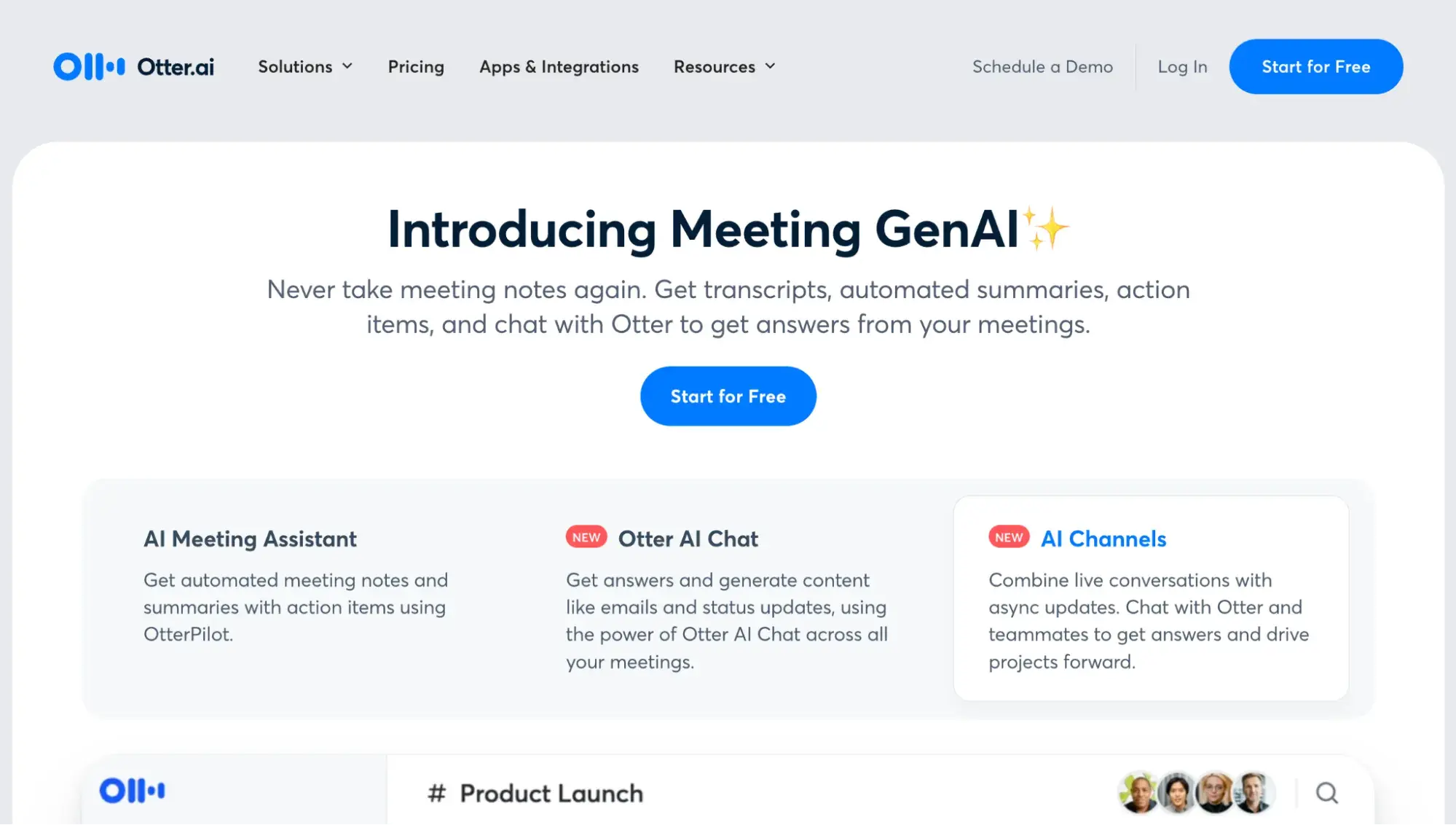
Who doesn’t love a freebie? Many top brands, like Dropbox, Slack, and HubSpot, lure in customers with a freemium model. One of my go-tos is Otter.ai, an AI transcription tool I use for capturing ideas, stories, and meeting notes. Otter’s free plan is pretty generous — 300 monthly transcription minutes and 30 minutes per conversation.
Honestly, I don’t see myself upgrading anytime soon. More importantly, by getting a taste of the Otter product, I can now better explain it to other people and companies — folks who may upgrade after hearing about it from me. So, Otter’s freemium model not only tempts me to upgrade but also turns me into a walking, talking advertisement for them.
2. Email Acquisition: Kaleigh Moore
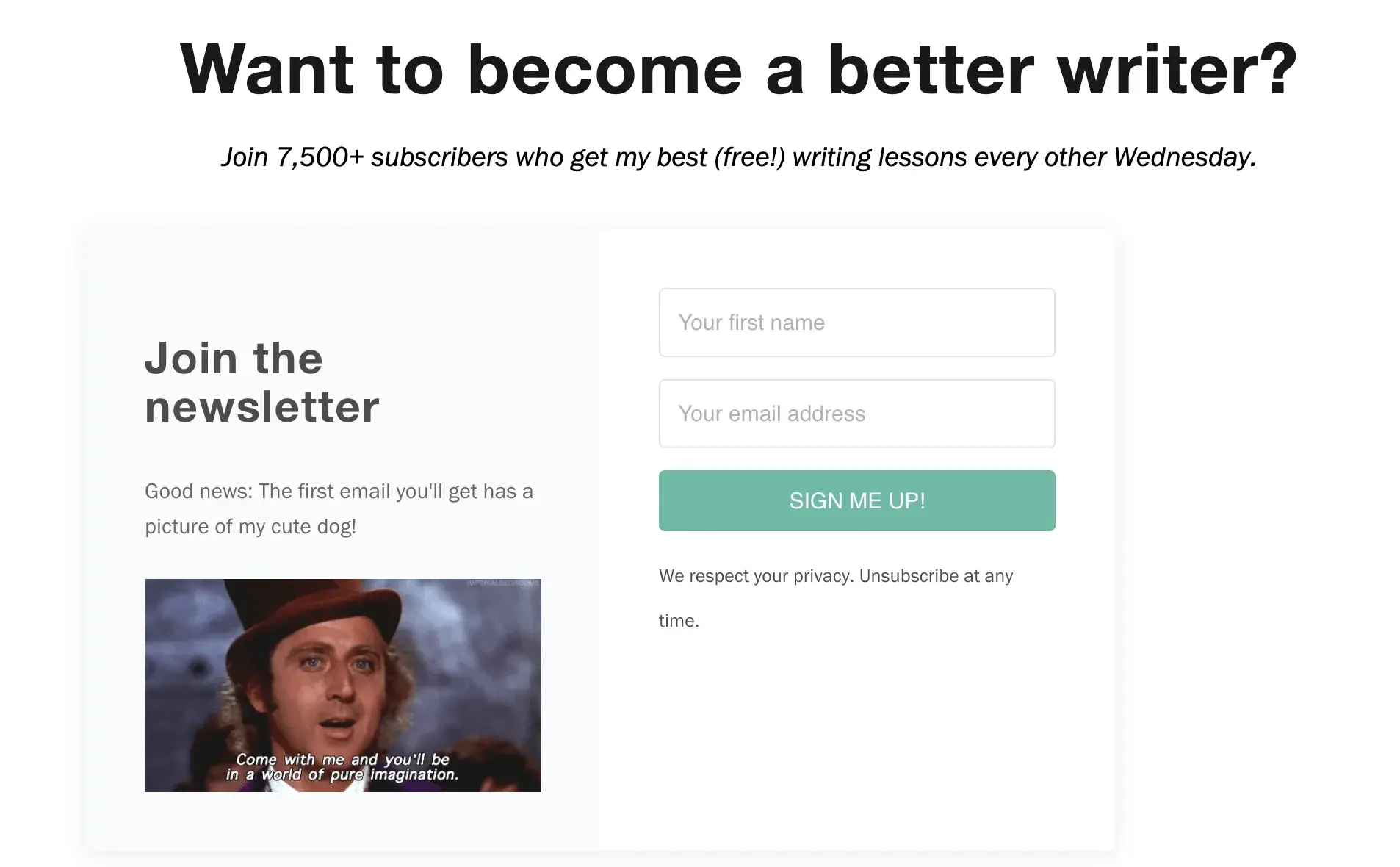
Email marketing is a valuable way to routinely engage with leads and keep your brand and product top-of-mind. This applies whether you're a Fortune 500 company or an individual freelance writer, like Kaleigh Moore.
Kaleigh has also been sending a bi-monthly email newsletter for five years, full of freelancing and writing tips and stories for her audience. Recently, she developed some high-value digital products based on her own experiences, and guess what channel she tapped to get them in front of potential buyers? Email.
By converting her website visitors and blog readers to email subscribers, Kaleigh successfully acquired new leads — and, now, customers for her new products.
3. Gated Content Acquisition: HubSpot
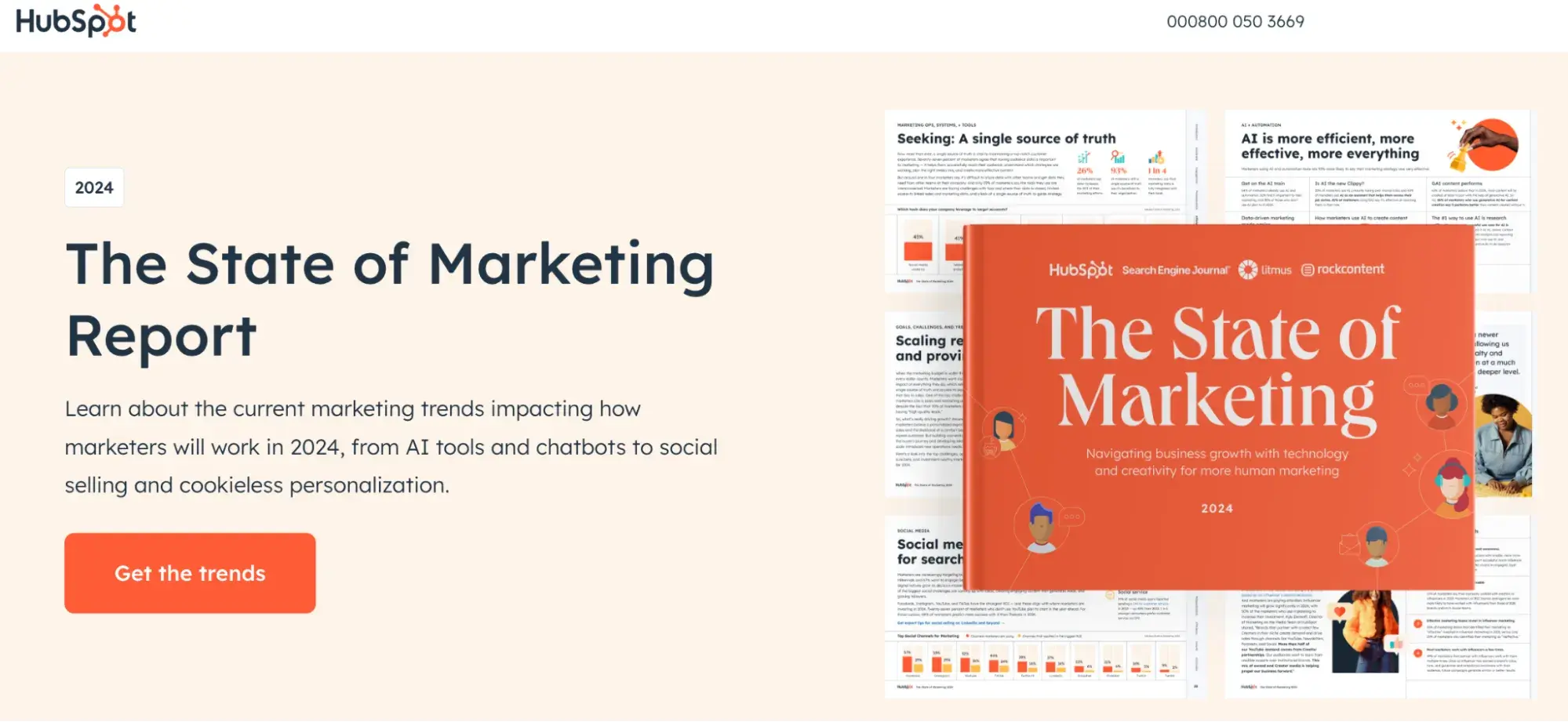
Okay, I might be a little biased here, but HubSpot is a pro at using gated content for customer acquisition. We churn out tons of new content offers every year—e-books, templates, worksheets, you name it. This “gated content” requires users to enter their emails to access it.
Another interesting example of this is interactive content acquisition, such as HubSpot's Make My Persona tool. By “gamifying” the persona creation process, HubSpot successfully captures the information of people interested in making their own buyer personas.
4. Organic Search Acquisition: Chima Mmeje
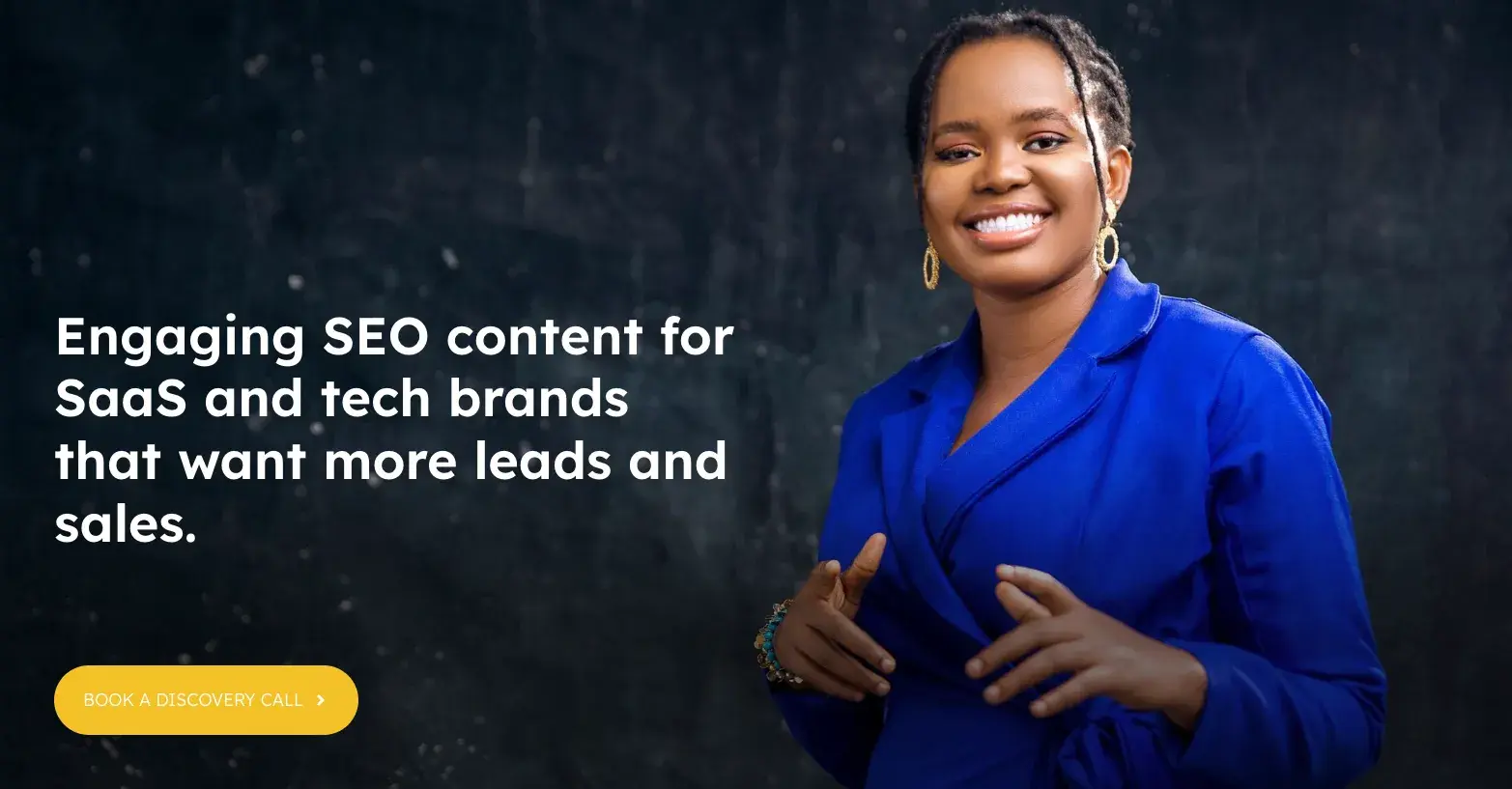
SEO is growing in popularity among marketers, and it makes sense. 29% of marketers actively use content marketing, and 50% of marketers plan on increasing their investment in content marketing in 2024.
The key is smart resource allocation, whether you build an in-house content team or outsource. Freelance SEO copywriter Chima Mmeje is a pro at this. She helps SaaS clients like Skillshare and Wix climb the search engine ranks by creating topic clusters, conducting keyword research,
Smart Customer Acquisition Helps You Grow Better
Customer acquisition is the lifeblood of any company, big or small. Giving up on marketing to new customers is never an option, no matter the cost. But I’ve learned that the key to growth isn’t just with the marketing or sales team — it’s with the customer service team and the customers themselves.
The companies that succeed put their customers in the spotlight, focusing on both acquisition and retention. When I set up my acquisition strategy correctly, I saw not only a lower customer acquisition cost but also an increase in customer lifetime value.
For me, customer acquisition is about finding the right customers who stick around and help bring in more. I stopped seeing customer acquisition as a one-way funnel and started picturing it as a flywheel — constantly working to bring new customers on board and ensuring they succeed once they’ve joined. When customers thrive, they naturally go to work on your behalf.
Editor's note: This post was originally published in June 2018 and has been updated for comprehensiveness.
.png)
Free Customer Service Metrics Calculator
Calculate your business's key metrics and KPIs for customer support, service, and success with this free template.
- Customer Acquisition Cost
- Customer Lifetime Value
- Customer Satisfaction Score
- And More!
Download Free
All fields are required.
.png)
-1.png?width=112&height=112&name=Customer-Service-Metrics-Calculator%20(1)-1.png)

![7 Customer Acquisition Challenges You Might Face This Year [New Data]](https://www.hubspot.com/hubfs/customer%20acquisition%20%20%281%29.webp)


![How AI Is Revolutionizing Customer Acquisition: A Complete Guide [+ Expert Insight]](https://www.hubspot.com/hubfs/ai-for-customer-acquisition-1-20241114-7929764.webp)



